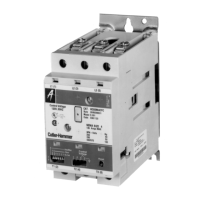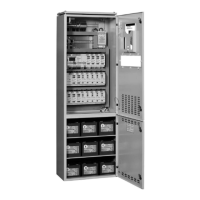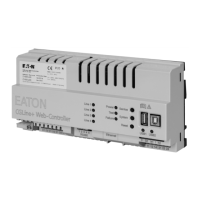For more information visit: www.eatonelectrical.com IB01602009E
Instruction Booklet
Page 14 Effective: April 2006
ATC-300 Automatic
Transfer Switch Controller
The S1 device Alarm will occur if the switch is commanded to go
from S1 to S2 and the S1 connected input is NOT removed
within 6 seconds after the command to transfer. The S1 device
Alarm will also occur if the switch is commanded to go from S2
to S1 and the S1 connected input is NOT connected within 6
seconds after the command to transfer from the neutral position.
That is the K2 relay closes AFTER TDNE or after TD PRE-TRAN
times out, if the S1 connected input is NOT opened within 6 sec-
onds the K2 relay will open and an S1 device error message,
“SOURCE 1 DEVICE”, will be displayed.
A typical transfer request will begin with an S1 outage (S1
becomes unavailable per the programmed setpoints), Engine
Test, or Plant Exercise function. After TDES, if programmed,
counts down, the Generator Start contact will close. For a Plant
Exercise or Engine Test, the S2 available light MUST become
available within 90 seconds or the generator start contacts will
reopen. Once S2 meets the requirements to be considered avail-
able, then TDNE, if programmed, will time down. The pretransfer
relay will energize if S1 is available. TD PRE-TRAN will time
down if programmed and if S1 is available (Engine Test or Plant
Exercise). The K2 relay will energize. The S1 connected input
MUST open within 6 seconds (see above). K2 will open IF TDN
is programmed. TDN will then time down and K2 and K4 will
energize until the S2 connected input is closed (this MUST hap-
pen within 6 seconds of K2/K4 closure or the S2 device alarm
will trigger and the K2 and K4 relays will deenergize). Once the
S2 connected input is satisfied, K2 and K4 will open and the pre-
transfer relay will de-energize.
When S1 returns and becomes available per the programmed set-
points, TDEN, if programmed, will time out. The pretransfer relay
will energize. TD PRE-TRAN, if programmed, will time out. K1
will energize for no longer than 6 seconds or until the S2 con-
nected input is removed. If the 6 seconds times out, then an S2
device Alarm will trigger and K1 will open. Once the input is
removed, then K1 will open if TDN is programmed. TDN will time
down and K1 and K3 will reclose until the S1 input is satisfied,
but for no longer than 6 seconds. If the 6 seconds is reached,
then an S1 device Alarm will be triggered and the K1 and K3
relays will open. If the S1 connected input is satisfied, then K1
will open, the pretransfer relay will de-enerigize, and TDEC will
time down and open the engine start contact.
The Go To Source 2 input (normally closed, open to initiate)
causes the Engine Start contacts to close. Once the S2 sensing
satisfies the setpoints programmed, then a transfer is initiated.
The transfer functions as described above. The controller will
maintain the Engine Start contacts and the S2 connected as long
as the Go To Source 2 input is maintained. Once it is removed, a
retransfer to S1, if S1 is available per the setpoints, will occur
and functions as described above. “Go To Source 2” is displayed
on the controller.
The Monitor Mode input (normally open, close to initiate) is uti-
lized to put the controller in a “Monitor” only state. No other
inputs will affect the operation of the controller when the Monitor
Mode input is initiated. The controller will ONLY monitor the
voltage and frequency of the S1 and S2 inputs. Changing of the
setpoints of the controller MAY be accomplished while in Monitor
Mode. All setpoints are accessible and all timers can be reset.
“ATS Not In Automatic” is displayed on the controller.
The Lockout input (normally closed, open to initiate) is utilized to
place the controller in a state where it will NOT supply any out-
puts regardless the inputs. It is used to monitor the state of any
fault indicating devices. If the fault device trips due to an over
current or over load condition, then a contact opening will place
the controller in the Lockout state. The Alarm contact will
change state when the lockout signal is sensed. “Lockout” is
displayed on the controller. The fault indicating device MUST be
reset before the controller can be reset or the Alarm will continue
to indicate.

